
On the night of Jul 09/10, 2014, I observed the cataclysmic variable star ASAS-SN14cv. You can read more about this star, which was discovered only recently, at
ASAS14cv shows smooth quick-rise-slow-fall variations of amplitude 0.05 mag at mag V = 13.1 or so.
The main setup was:
Notes from the night
Below is a graph showing the sky brightness as a function of time during the observing run.

Below is a graph showing the FWHM as a function of time during the observing run.

Here's a chart of the field of ASAS-SN14cv, which is at
RA = 17:43:48.58 Dec = +52:03:46.8 (J2000)
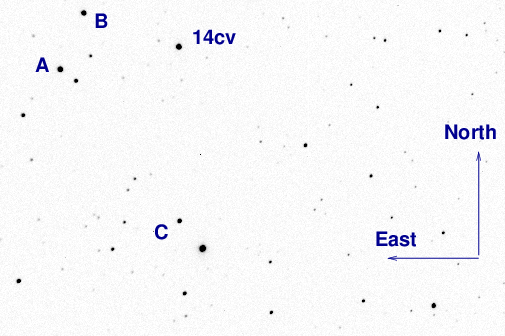
Some of the reference stars marked above have magnitudes in the UCAC4. Specifically, star "A" above is
The television camera on the finder scope shows the following when we're pointed at ASAS-14cv. North up, East left, field about 1 degree on a side.
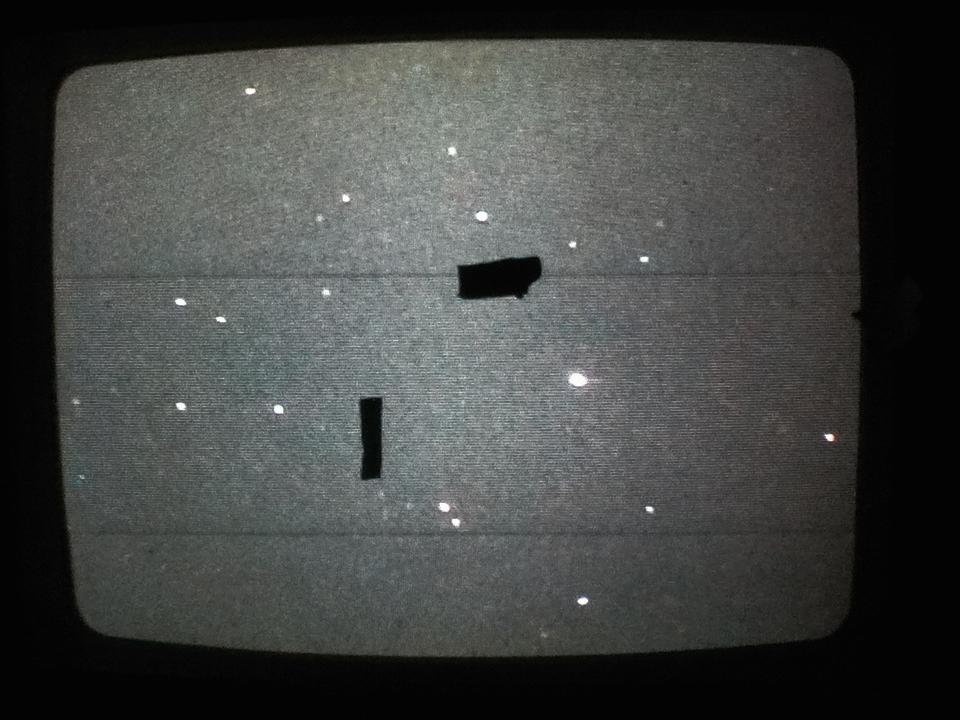
The image adjustment factor graph shows a big rise surrounding the gap in observations, when a formation of clouds moved across the sky.
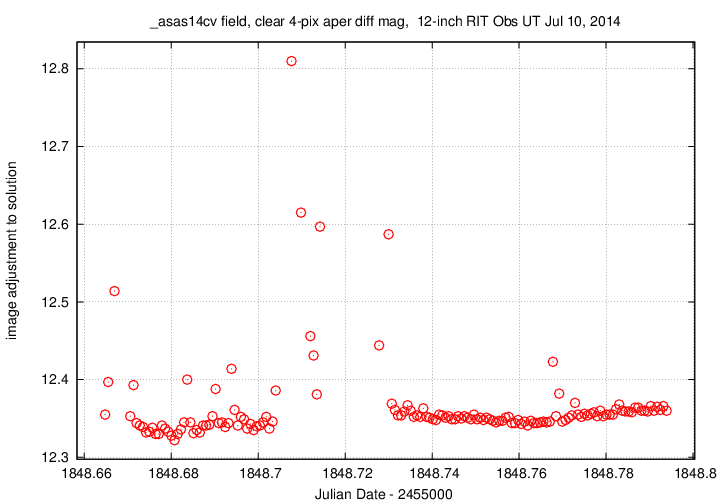
Using aperture photometry with a radius of 4 pixels (radius of 7.4 arcsec), I measured the instrumental magnitudes of a number of reference stars and the target. Following the procedures outlined by Kent Honeycutt's article on inhomogeneous ensemble photometry, I used all stars available in each image to define a reference frame, and measured each star against this frame. I used the UCAC4 V-band magnitude of star "A" to convert the ensemble instrumental magnitudes to a reported "V"-band magnitude (but remember, it's a clear filter).
Sigma-vs-mag plot:
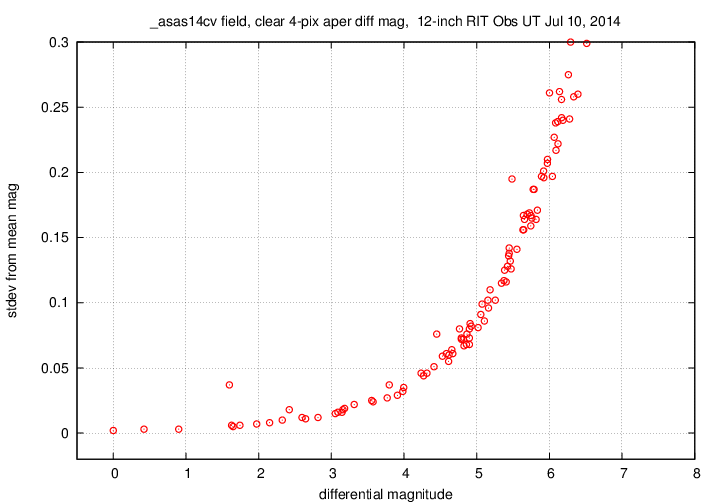
The target shows very clear periodic variations, with a larger amplitude than a few nights ago.
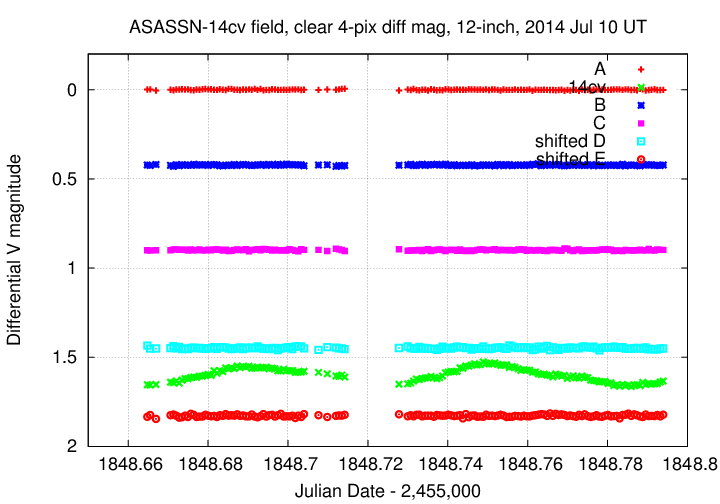
You can see my measurements of the star in the ASCII text file below. The first few lines are shown here:
# Measurements of ASAS_SN14cv made at RIT Obs, Jul 10, 2014 UT, # in mediocre conditions, # by Michael Richmond, using 12-inch Meade and SBIG ST-8E CCD. # Exposures 45 seconds long, no filter. # Tabulated times are midexposure (FITS header time - half exposure length) # and accurate only to +/- 1 second (??). # 'mag' is a differential magnitude based on ensemble photometry # using a circular aperture of radius 7.4 arcseconds. # which has been shifted so UCAC4 711-058151 has mag=11.518 # which is its V-band mag according to UCAC4. # # UT_day JD HJD mag uncert Jul10.16479 2456848.66479 2456848.66610 13.172 0.006 Jul10.16551 2456848.66551 2456848.66682 13.174 0.006 Jul10.16696 2456848.66696 2456848.66827 13.171 0.006
Last modified 7/10/2014 by MWR.